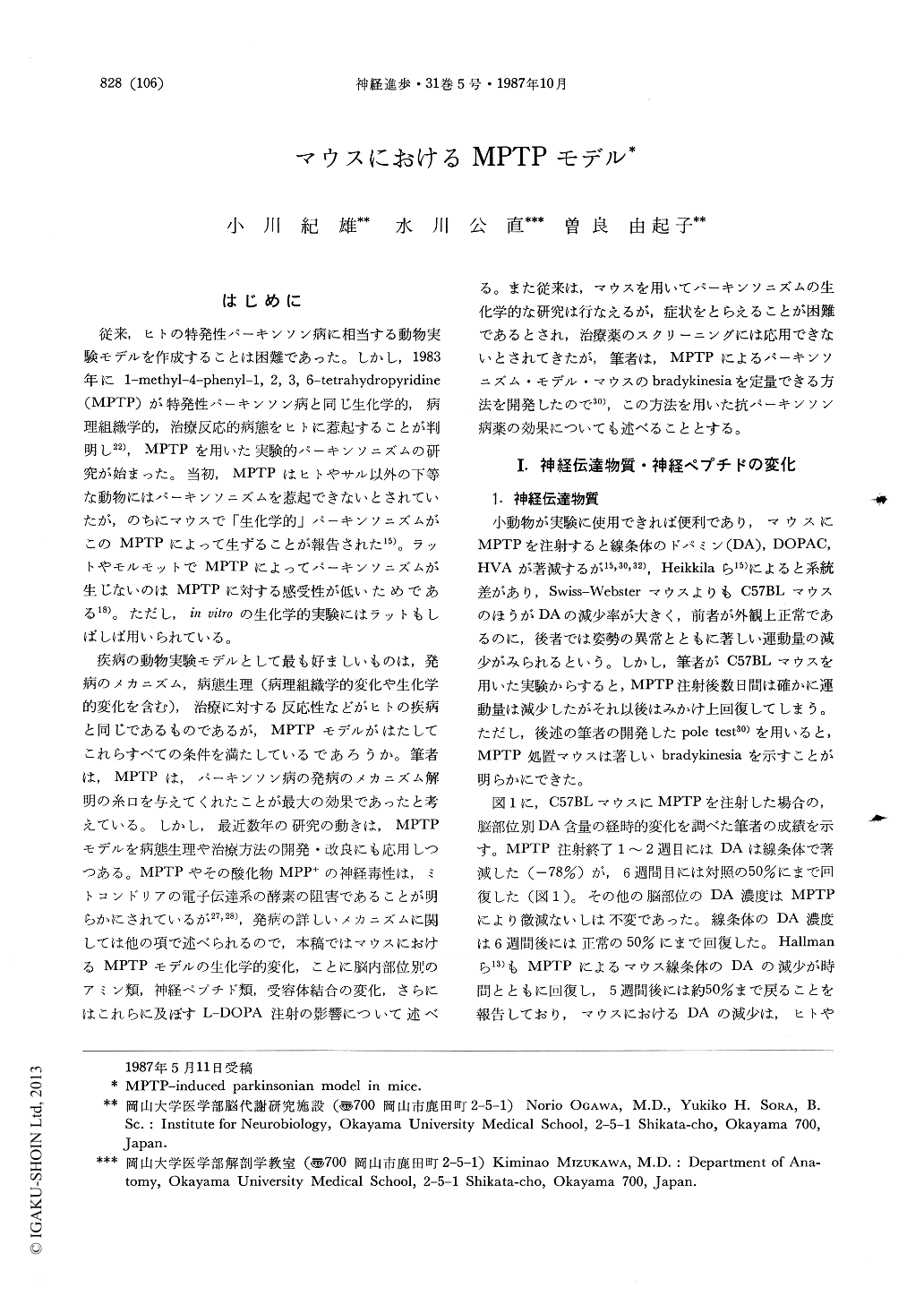Japanese
English
- 有料閲覧
- Abstract 文献概要
- 1ページ目 Look Inside
はじめに
従来,ヒトの特発性パーキンソン病に相当する動物実験モデルを作成することは困難であった。しかし,1983年に1-methyl-4-phenyl-1,2,3,6-tetrahydropyridine(MPTP)が特発性パーキンソン病と同じ生化学的,病理組織学的,治療反応的病態をヒトに惹起することが判明し22),MPTPを用いた実験的パーキンソニズムの研究が始まった。当初,MPTPはヒトやサル以外の下等な動物にはパーキンソニズムを惹起できないとされていたが,のちにマウスで「生化学的」パーキンソニズムがこのMPTPによって生ずることが報告された15)。ラットやモルモットでMPTPによってパーキンソニズムが生じないのはMPTPに対する感受性が低いためである18)。ただし,in vitroの生化学的実験にはラットもしばしば用いられている。
疾病の動物実験モデルとして最も好ましいものは,発病のメカニズム,病態生理(病理組織学的変化や生化学的変化を含む),治療に対する反応性などがヒトの疾病と同じであるものであるが,MPTPモデルがはたしてこれらすべての条件を満たしているであろうか。筆者は,MPTPは,パーキンソン病の発病のメカニズム解明の糸口を与えてくれたことが最大の効果であったと考えている。
A neurotoxin 1-methyl-4-phenyl-1,2,3,6-tetrahydropyridine (MPTP), which produces pathological changes similar to human idiopathic Parkinson's disease in animals, was injected in mice for biochemical and pharmacological studies. The dopamine concentration showed a marked decrease (-78%) in the striatum 2 weeks after the injection of MPTP (30mg/kg i.p. twice a day for 5 days; a total dose, 300 mg/kg) but no changes or only slight decreases in other brain regions. The norepinephrine concentration also decreased to half the preadministration level in the striatum. These changes closely resembled those observed in the brain of parkinsonian patients. However, 6 weeks after MPTP, striatal dopamine and norepinephrine concentrations returned to 50% and 100% of control level, respectively. Substance P, cholecystokinin-octapeptide and somatostatin levels showed no change in any brain region 2 weeks after MPTP. Interestingly, striatal somatostatin level showed a marked decrease (-50%) 6 weeks after MPTP. An examination for evaluating bradykinesia of MPTP-treated mice (pole test) devised by the author revealed that bradykinesia was alleviated dosedependently by injection of L-DOPA. These results suggested that MPTP-treated mice are a useful experimental model for the study of parkinsonism, and that the pole test using these animals is of value in the screening of antiparkinsonian agents.

Copyright © 1987, Igaku-Shoin Ltd. All rights reserved.


